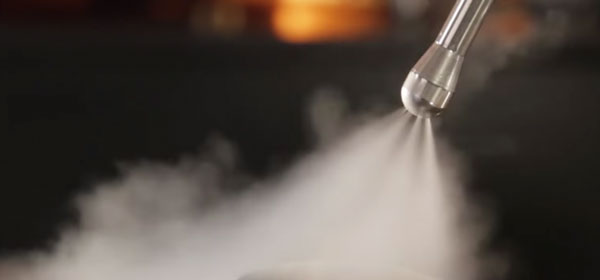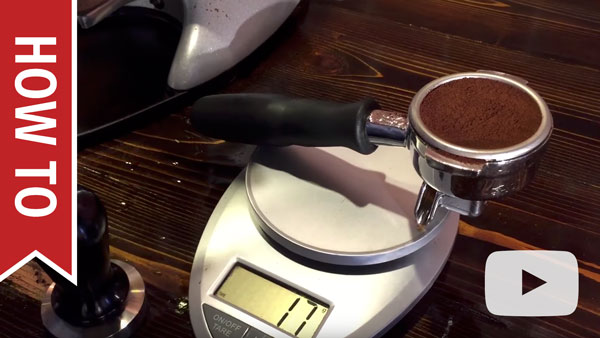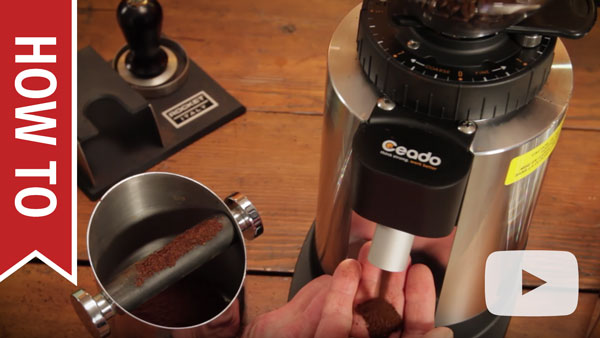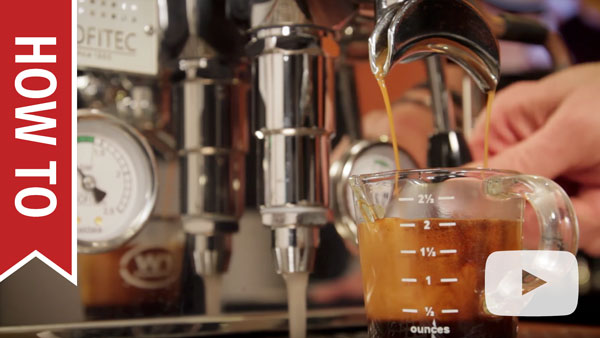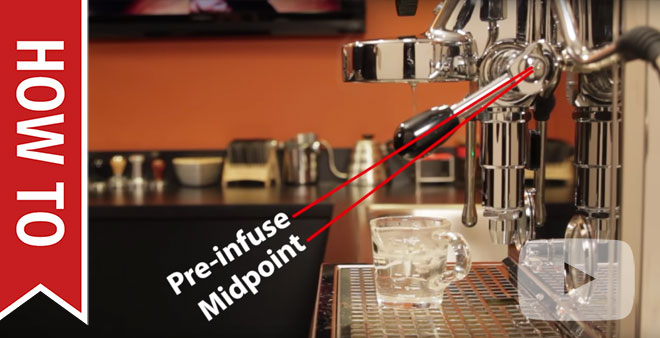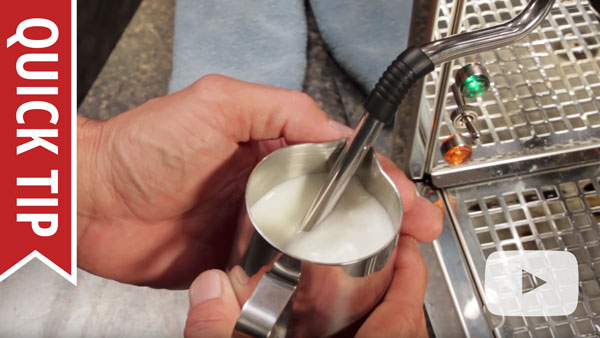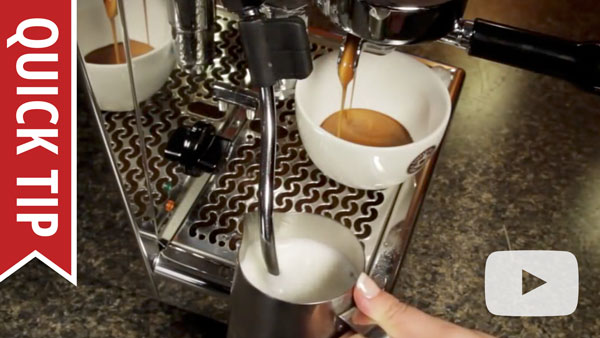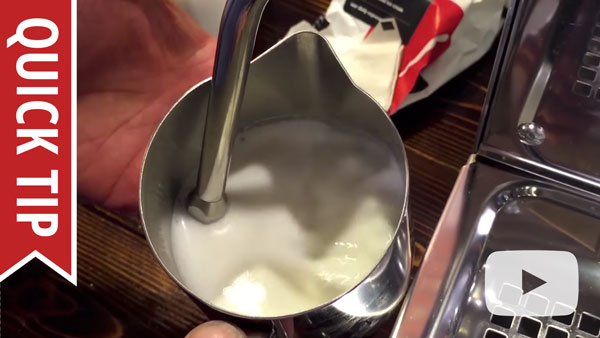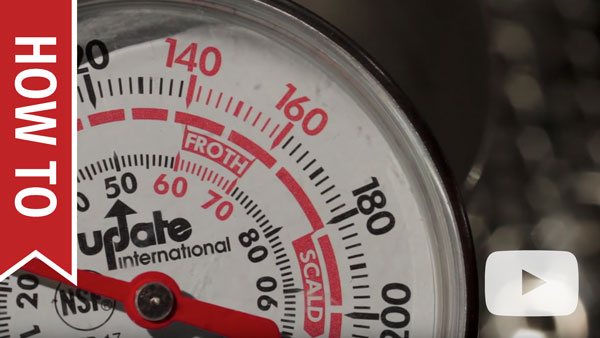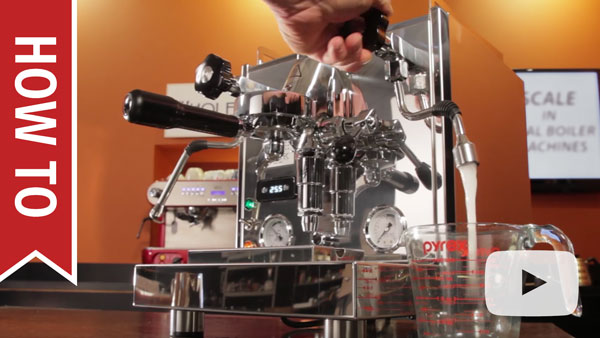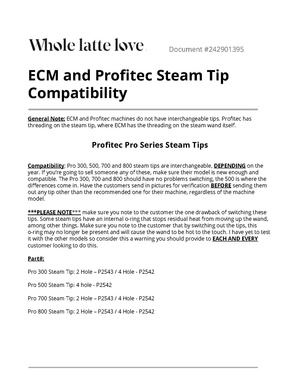|
|
| (19 intermediate revisions by 6 users not shown) |
| Line 1: |
Line 1: |
| − | The Profitec Pro 700 is a [[:Category:Prosumer|Prosumer]] espresso machine which features a dual boilers and a PID. {{Description-Table
| + | {{Getting-Started |
| − | |title = Profitec Pro 700 | + | |brand = Profitec |
| − | |machine_image = [[File:PROFITEC_PRO_700.gif]] | + | |machine_type = Prosumers |
| − | |manufacturer = Profitec | + | |product_banner = [[File: Wiki_ProductPageBanner_1200x175_Profitec700_v1.jpg|link=]] |
| − | |model_name = Pro 700 | + | |product_page_title = Profitec Pro 700 |
| − | |type = [[:Category:Prosumers|Prosumer]] | + | |page_type = set up |
| | + | |section1 = Install It |
| | + | |anchor1 = Install |
| | + | |section2 = Get it Good & Hot |
| | + | |anchor2 = Heating |
| | + | |section3 = Get a Handle on your Tamp |
| | + | |anchor3 = Tamping |
| | + | |section4 = Brew Better |
| | + | |anchor4 = Brew Better |
| | + | |section5 = Brew the Best You Can Brew |
| | + | |anchor5 = Brew Best |
| | + | |section6 = Preinfusion and You |
| | + | |anchor6 = Preinfusion |
| | + | |section7 = Get Frothing |
| | + | |anchor7 = Get Frothing |
| | + | |section8 = Froth Better |
| | + | |anchor8 = Froth Better |
| | + | |section9 = Frothing and Habits to Avoid |
| | + | |anchor9 = Frothing Mistakes |
| | + | |section10 = Steam & the Heating Sweet Spot |
| | + | |anchor10 = Steaming Temperature |
| | + | |section11 = Steam with Thermometers |
| | + | |anchor11 = Steam with Thermometers |
| | + | |section12 = Don't Break It |
| | + | |anchor12 = Preventative Maintenance |
| | + | |section13 = Steam Tip Compatibility |
| | + | |anchor13 = Steam Tip Compatibility |
| | }} | | }} |
| − | | + | {{Set-Up-Content |
| − | == Machine Description ==
| + | |dual_boiler = yes |
| − | | + | |
| − | A truly exceptional home use espresso machine, the Pro 700 is the realization of Profitec's dream of creating a machine that provides baristas with a singular espresso experience. A marriage of German engineering and Italian tradition, the machine impresses not only with its quality components and construction, but also with nuanced features that ensure ease of use, longevity and the brewing of excellent espresso.
| + | |
| − | | + | |
| − | The machine is housed in beautiful mirror-finish stainless steel panels with smoothed edges. The housing rests on a one-piece internal steel frame that extends from the back of the machine through to the drip tray. As opposed to welding the tray to the front of the machine, making it part of the frame protects it from bending or bowing during shipping or as the result of continuous use. The top of the machine provides a spacious cup warming surface and can be removed for easy access the water reservoir.
| + | |
| − | | + | |
| − | As a dual boiler machine, there is both a 0.75 liter boiler dedicated exclusively to brewing and a 2 liter boiler dedicated to steaming. Both boilers are made of stainless steel and wrapped with thermal insulation. The boilers have been bolted to the frame of the machine for structural stability but are easily removable; an element of the highly modular internal design that allows for easy servicing and repair. Brew pressure is provided by the powerful RPM motor and rotary pump which cuts down on the noise produced by the brewing process and allows you to connect the the machine directly to a water line or use the 3 liter water reservoir. The last facet of the brewing process, the E61 brew group is made of solid chrome plated brass and is constantly heated by a thermosiphon system to ensure maximum temperature stability. A benefit of having two boilers, brewing and steaming can be performed simultaneously.
| + | |
| − | | + | |
| − | The Pro 700 has an insulated steam wand, with a four-hole steam tip. The hot water wand is similarly insulated to help prevent accidental burns. The insulation also helps to prevent milk from getting burned onto the wand, making it easier to maintain. A unique aspect of steaming and dispensing hot water with this machine are the spring loaded valves. The benefit of these valves is that they don’t need to be fully opened or closed to regulate the flow of steam/water. The way it works is that by turning the knobs, pressure is either added to or released from a spring that holds the valves shut. This prevents you from having to rotate the knobs numerous times to open or close the valves. In turn this reduces wear and tear because you no longer risk over tightening the valves to seal them. When you’re finished brewing, the manual three way valve which is controlled by the brewing lever drains any excess pressure and water directly into the 1 liter drip tray, keeping the internal components dry.
| + | |
| − | | + | |
| − | A unique and desirable feature of the Pro 700 is its front mounted PID display that monitors both the brew and steam boiler temperatures and allows you to adjust both. This feature allows for more precise brewing conditions. An additional function boasted by the Pro 700’s PID is its built-in shot timer that switches on when you begin brewing. The timer is accurate up to the second. In addition to the PID, the front of the machine also sports dual pressure gauges that monitor both pump and boiler pressure.
| + | |
| − | | + | |
| − | | + | |
| − | ==Basic Usage==
| + | |
| − | | + | |
| − | ===Getting Started===
| + | |
| − | | + | |
| − | {{#ev:youtube|https://www.youtube.com/watch?time_continue=280&v=kTLp2hQowG8|480|center}} | + | |
| − | | + | |
| − | ===Adjusting Brew Pressure===
| + | |
| − | | + | |
| − | {{#ev:youtube|https://www.youtube.com/watch?v=HWZpLC7K8aA|480|center}}
| + | |
| − | | + | |
| − | ===Adjusting The PID===
| + | |
| − | | + | |
| − | {{#ev:youtube|https://www.youtube.com/watch?v=Oh95qgfsdqk|480|center}}
| + | |
| − | | + | |
| − | ===Draining The Boilers===
| + | |
| − | | + | |
| − | {{#ev:youtube|https://www.youtube.com/watch?v=TFUwuGJWny4|480|center}}
| + | |
| − | | + | |
| − | ===Switching Between Reservoir/Plumb===
| + | |
| − | | + | |
| − | {{#ev:youtube|https://www.youtube.com/watch?v=A8xUrzbfHuo|480|center}}
| + | |
| − | | + | |
| − | ===Manual Pump Priming===
| + | |
| − | | + | |
| − | {{#ev:youtube|https://www.youtube.com/watch?v=8AnSY4luTe8|480|center}}
| + | |
| − | | + | |
| − | ===Complete Tear-Down===
| + | |
| − | | + | |
| − | {{#ev:youtube|https://www.youtube.com/watch?v=kiFw0SV24S8|480|center}}
| + | |
| − | | + | |
| − | | + | |
| − | == Cleaning & Maintenance ==
| + | |
| − | | + | |
| − | {{Maintenance-Prosumer
| + | |
| − | |group_gasket_instr = Replacement group gaskets can be purchased [https://www.wholelattelove.com/products/profitec-group-gasket here]. Instructions for replacing the group gasket can be found on pp.31-32 of the machine manual. | + | |
| − | |descaling_products = Alternatively, Profitec offers brewgroup cleaning tablets which can be used in the same way as backflushing powder. The brew unit cleaning tablets can be purchased [https://www.wholelattelove.com/products/profitec-brew-group-cleaning-tablets here].
| + | |
| − | |softener_info = Because this machine should only be descaled professionally we recommend a filtration system, such as a [https://www.wholelattelove.com/products/bwt-bestmax-premium-filter-package BWT Inline Filter], be installed on the unit to prevent scale buildup. The machine does have a basic debris filter, but this will not soften the water or prevent scale buildup in any way.
| + | |
| | }} | | }} |
| − | | + | ---- |
| − | | + | ===Steam Tip Compatibility=== |
| − | == Troubleshooting ==
| + | {{Content-Columns |
| − | | + | |column_1 = |
| − | ===No Crema or Bad Tasting Shots===
| + | : There are several different steam tips for ECM and its sister brand Profitec, some of which are interchangeable and others not. Consult this comprehensive document on the topic for more information. |
| − | | + | |column_2 = |
| − | {{Troubleshooting-No-Crema-Bad-Shots}}
| + | [[File:ECM_and_Profitec_Steam_Tip_Compatibility.pdf|center|link=https://wiki.wholelattelove.com/File:ECM_and_Profitec_Steam_Tip_Compatibility.pdf]] |
| − | | + | |media_caption = |
| − | | + | Steam Tip Compatibility |
| − | ===Difficulty Frothing=== | + | |
| − | | + | |
| − | {{Troubleshooting-Frothing}} | + | |
| − | | + | |
| − | | + | |
| − | ===Flow Issues===
| + | |
| − | | + | |
| − | The first place to start with any flow issue is cleaning the machine. Before going through these steps please make sure the machine is cleaned according to the [[#Cleaning & Maintenance|Cleaning & Maintenance]] section of this article.
| + | |
| − | | + | |
| − | {{Troubleshooting-Prosumer-No-Steam-PID
| + | |
| − | |vacuum_relief_instr = Instructions for cleaning or replacing the vacuum relief valve are found in the video below: {{#ev:youtube|https://www.youtube.com/watch?v=L9P0t7__9ZM|480|center}} | + | |
| − | |hls_reset_instr = Instructions for resetting the high limit switches are found in the video below: {{#ev:youtube|https://www.youtube.com/watch?v=VHeRrjfg3n0|480|center}} | + | |
| | }} | | }} |
| | | | |
| − | {{Troubleshooting-Prosumer-Brew-Blocked
| + | [[Category:Profitec]] |
| − | |grouphead_instr = Instructions for taking the grouphead apart for cleaning can be found on pp.31-32 of the machine's manual. Use a grouphead brush or old toothbrush to scrub down the metal components, and then soak them in a solution of hot water and backflushing powder for ten minutes before reassembling the grouphead.
| + | |
| − | |backflush_instr = Instructions for backflushing a lever style machine are found in the video below: {{#ev:youtube|https://www.youtube.com/watch?v=k1Vkfj83uyg|480|center}}
| + | |
| − | |valve_instr =<br />
| + | |
| − | ##The brew pressure valve may need to be adjusted, it may be set too low. Instructions for adjusting this valve can be found in the video below: {{#ev:youtube|https://www.youtube.com/watch?v=HWZpLC7K8aA|480|center}}
| + | |
| − | ##The plumb valve may be set to the incorrect position. Make sure the valve is turned to the appropriate position for the water supply option you are using.
| + | |
| − | }}
| + | |
| − | | + | |
| − | {{Troubleshooting-Prosumer-No-Hot-Water-PID
| + | |
| − | |vacuum_relief_instr = Instructions for cleaning or replacing the vacuum relief valve are found in the video below: {{#ev:youtube|https://www.youtube.com/watch?v=L9P0t7__9ZM|480|center}}
| + | |
| − | |hls_reset_instr = Instructions for resetting the high limit switches are found in the video below: {{#ev:youtube|https://www.youtube.com/watch?v=VHeRrjfg3n0|480|center}}
| + | |
| − | }}
| + | |
| − | | + | |
| − | ====No Flow At All====
| + | |
| − | | + | |
| − | {{Troubleshooting-Prosumer-No-Flow-At-All
| + | |
| − | |sensor_instr =<br />
| + | |
| − | ###Remove the drip tray from the front and make sure the plumb switch is turned off.
| + | |
| − | ###Remove the reservoir and make sure the float magnet is facing the sensor. The magnet on the float should be facing the front left corner of the tank, where it meets up with the sensor.
| + | |
| − | ###Check to make sure the wire for the water level sensor isn't loose/disconnected on the inside of the machine.
| + | |
| − | |pump_instr = Check to make sure the pump doesn't have any loose/disconnected wires.
| + | |
| − | }}
| + | |
| − | | + | |
| − | | + | |
| − | ===Machine Is Leaking===
| + | |
| − | | + | |
| − | {{Troubleshooting-Prosumer-Bad-Gasket
| + | |
| − | |gasket_instr = Instructions for replacing the group gasket can be found on pp.31-32 of the machine manual. Replacement group gaskets can be purchased [https://www.wholelattelove.com/products/profitec-group-gasket here].
| + | |
| − | }}
| + | |
| − | | + | |
| − | {{Troubleshooting-Prosumer-E61-Leak
| + | |
| − | |lever_style = Lever
| + | |
| − | |lever_leak_instr = A blowout of the lever assembly can be seen on p.13 of the machine's parts diagram. The o-rings that will need to be checked are listed as part 22 and part 8 on this page.
| + | |
| − | ###To access these o-rings remove the end cap of the lever assembly using a flathead screwdriver.
| + | |
| − | ###Once this is removed the other components of the grouphead assembly can begin to be slipped off. The bolts that the lever slides into can be removed with open ended wrenches or an adjustable wrench.
| + | |
| − | ###Inspect the o-rings and make sure they are not damaged. It's possible that they are just dirty and need to be cleaned off and reseated. If they are damaged, broken, or shows signs of chaffing then they will need to be replaced.
| + | |
| − | ###Inspect the valve components well to make sure they are intact.
| + | |
| − | ###Reassemble the components and see if leaking is resolved.
| + | |
| − | |top_valve_leak_instr = A blowout of the top valve assembly, known as the mushroom or trumpet valve, can be found on p.13 of the machine's parts diagram. There are a few components which can be contributing to the leaking. There are three o-rings, listed as parts 2, 6, and 8 on this page of the diagram. There is also a valve assembly shown as part 10 on the same page.
| + | |
| − | ###To access these parts use an open ended wrench or adjustable wrench to remove the smaller top bolt of the E-61. This will give you access to the first o-ring and spring assembly.
| + | |
| − | ###To access further down into this part of the grouphead use a wrench to remove the large bolt. This will let you access the other two o-rings, another spring assembly, and the valve assembly.
| + | |
| − | ###Inspect all of these components for integrity. Clean any dirty parts and replace any broken parts.
| + | |
| − | ###Reassemble the grouphead and see if the leaking is resolved.
| + | |
| − | |bottom_valve_leak_instr = A blowout of the bottom valve assembly, known as the release valve, can be found on p.13 of the machine's parts diagram. There are two o-rings in this assembly, listed as parts 8 and 36 on the diagram, and two spring and valve assemblies, that can be causing the leak.
| + | |
| − | ###To access these parts use an open ended wrench or adjustable wrench to remove the smaller bottom bolt. You will be able to access part 36, the o-ring, and the first spring and valve assembly. Inspect the parts. If they are dirty clean them off, if they are broken replace them.
| + | |
| − | ###To access the next o-ring and valve assembly use a wrench to remove the larger of the bolts. Again, inspect the parts for cleanliness and damage. Clean or replace as needed.
| + | |
| − | ###Reassemble the release valve and test to see if the leaking is resolved.
| + | |
| − | |E61_group_cleaning_instr = Instructions for cleaning the entire E-61 can be found by clicking [http://coffeetimex.wikidot.com/e61-group-servicing here].
| + | |
| − | |E61_attach_instr = There are two possible reasons for the machine to be leaking from here.
| + | |
| − | ##The first is that one of the plumb lines connected to the back of the E-61 is not secure resulting in a leak. These will need to be tightened from the inside of the machine. You may see leaking from the bottom of the machine as well if this is the case. Remove the top of the machine and look towards the front of the machine. These lines will be located on the back of the faceplate, opposite to where the grouphead is seated. They are listed as parts 6 and 8 on p.7 of the machine's parts diagram. Use an open ended wrench or adjustable wrench to tighten these down. If the leaking persists you may need to apply white teflon plumbers tape or a sealing compound such as food safe permabond.
| + | |
| − | ##The other possibility is that the E-61 group chassis gasket is not sealing tightly, or is worn out or damaged and will need to be replaced. The chassis gasket is listed as part 15 on p.13 of the parts diagram. There are two bolts which secure the E-61 to the machine chassis, causing it to press on the gasket and create a seal. First try tightening these two bolts down. The bolt assembly is shown on p.13 of the diagram as well, parts 11-14. If tightening these bolts does not resolve the leak, then the chassis gasket will need to be replaced.
| + | |
| − | }}
| + | |
| − | | + | |
| − | {{Troubleshooting-Prosumer-Bottom-Leak
| + | |
| − | |water_source = Reservoir
| + | |
| − | |level_probe_instr = The water level probe can be cleaned by removing it from the boiler. First make sure the machine is unplugged and fully cooled off. The water level probe is listed as part 10 on p.9 of the parts diagram.
| + | |
| − | ####The probe is secured to the boiler by a two bolt assembly. Use an open ended wrench or adjustable wrench to loosen the smaller upper bolt. Once this nut is loosened the probe should be able to slide out.
| + | |
| − | ####Once the probe is removed clean it off. Soak the probe in a solution of hot water and backflushing powder.
| + | |
| − | ####If the probe has a large amount of scale buildup on it a scrubby sponge can be used to remove the scale buildup. Do not use a metal scrubber as it can damage the probe.
| + | |
| − | ####Also examine the wiring of the probe to make sure it is intact and is attached to the power board of the machine.
| + | |
| − | }}
| + | |
| − |
| + | |
| − | {{Troubleshooting-Prosumer-Top-Steaming
| + | |
| − | |vacuum_cleaning_instr = Instructions for cleaning or replacing the vacuum relief valve are found in the video below: {{#ev:youtube|https://www.youtube.com/watch?v=L9P0t7__9ZM|480|center}}
| + | |
| − | |steam_adjust_style = PID
| + | |
| − | }}
| + | |
| − | | + | |
| − | {{Troubleshooting-Prosumer-Wand-Leak
| + | |
| − | |knob_instr = Instructions for taking apart the knob assembly can be found in the video below: {{#ev:youtube|https://www.youtube.com/watch?v=4WdlV1pCtaA|480|center}}
| + | |
| − | ##There is also a seal in the steam valve that may be worn or dirty and is letting water through. The seal may need to be replaced, or it can also be flipped over and reused. The video below explains: {{#ev:youtube|https://www.youtube.com/watch?v=kiFw0SV24S8|480|center|||start=1012}}
| + | |
| − | |tip_instr = <br />
| + | |
| − | ##The steam tip o-ring is easy to access. Simply unscrew the steam tip and there will be a small o-ring between the tip the wand arm. Inspect this o-ring for damage and clean it.
| + | |
| − | ##The hot water tip is a little more complicated, but still easily accessed and cleaned.
| + | |
| − | ###First unscrew the tip assembly from the wand arm.
| + | |
| − | ###There will be an o-ring between the tip assembly and the wand arm. If the leaking was coming from here, then this o-ring needs to be cleaned and repositioned, or if it is damaged it will need to be replaced. [[File:PRO_700_Hot_Water_Tip_Removed.jpg|200px|thumbnail|center|The red arrow points to the o-ring for the hot water tip.]]
| + | |
| − | ###If the leaking was coming from farther down on the tip, then the tip will need to be disassembled further to troubleshoot. To disassemble the tip further simply twist the two halves of the tip assembly in opposite directions. Alternatively you can screw the tip back onto the machine and then just unscrew the bottom half of the tip; this will give you a better grip on the tip to unscrew the two halves. [[File:PRO_700_Hot_Water_Tip_End_Removed.jpg|400px|thumbnail|center]]
| + | |
| − | ###Once the tip is apart it will separate into three separate pieces. There will be three metal pieces and another o-ring. Inspect the o-ring for cleanliness and damage. The metal pieces can be soaked in a solution of hot water and backflushing powder to remove and scale buildup on them. [[File:PRO_700_Hot_Water_Tip_Parts.jpg|400px|thumbnail|center|The disassembled hot water tip.]]
| + | |
| − | |ball_joint_instr = <br />
| + | |
| − | ##These instructions apply to both the steam and hot water wands. First remove the wand arm. This can be done by unscrewing the hex shaped nut at the top of the arm. Please note that this assembly is reverse threaded, so you will need to turn the nut clockwise to loosen it. [[File:PRO 700 Ball Joint Nut.jpg|400px|thumbnail|center|Ball Joint Securing Nut]]
| + | |
| − | ##Once the wand is removed you may have parts stick to the valve assembly. Do not lose these parts. [[File:PRO_700_Wand_Removed.jpg|400px|thumbnail|center|The tension spring may be stuck in the steam valve like the picture shows.]]
| + | |
| − | ##If the leaking was coming from the top of the securing nut, check the white teflon o-ring to make sure it is in clean and in good condition. [[File:PRO 700 Ball Joint O-ring.jpg|400px|thumbnail|center|The red arrow points to the teflon o-ring.]]
| + | |
| − | ##Inspect the tension spring to make sure it is in good condition. The spring should be really firm. If it is easily compressed then it may need to be replaced. The bottom of the spring will have a metal gasket, which helps the wand pivot on the spring Make sure these parts are clean and reinstall them. [[File:PRO_700_Ball_Joint_Blowout.jpg|400px|thumbnail|center|Parts of the wand ball joint. The metal gasket is pictured in the center, and inserts into the bottom of the spring.]]
| + | |
| − | |valve_attach_instr = These instructions apply to both the steam and hot water valve assemblies.
| + | |
| − | ##You will need two open ended wrenches, or adjustable wrenches to tighten this assembly down.
| + | |
| − | ##First remove the top panel and covering of the machine. Put one of the wrenches on the bolt pictured below. The bolt will be towards the front of the machine, opposite to where the valve assembly attaches to the faceplate.[[File:PRO_700_Internal_Valve_Bolt.jpg|400px|thumbnail|center]]
| + | |
| − | ##Place the other wrench on the square shaped steam valve on the front of the machine. Keep this wrench stationary, and then turn the other wrench to tighten the bolt down.
| + | |
| − | }}
| + | |
| − | | + | |
| − | ===Machine Not Heating Or Powering On===
| + | |
| − | | + | |
| − | {{Troubleshooting-Prosumer-No-Power}}
| + | |
| − | | + | |
| − | {{Troubleshooting-Prosumer-Brew-Cold
| + | |
| − | |temp_adjust_style =
| + | |
| − | |pid_adjust_instr =
| + | |
| − | |pstat_adjust_instr =
| + | |
| − | |hls_instr =
| + | |
| − | |element_testing_instr =
| + | |
| − | }}
| + | |
| − | | + | |
| − | {{Troubleshooting-Prosumer-Steam-Cold
| + | |
| − | |steam_test_instr =
| + | |
| − | |temp_adjust_style =
| + | |
| − | |pid_adjust_instr =
| + | |
| − | |pstat_adjust_instr =
| + | |
| − | |hls_instr =
| + | |
| − | |element_testing_instr =
| + | |
| − | }}
| + | |
| − | | + | |
| − | {{Troubleshooting-Prosumer-No-Heat
| + | |
| − | |tank_instructions =
| + | |
| − | |dual_boiler =
| + | |
| − | |hls_reset_instr =
| + | |
| − | }}
| + | |
| − | | + | |
| − |
| + | |
| − | ===Portafilter Handle Not Fitting On Machine===
| + | |
| − | | + | |
| − | {{Troubleshooting-Prosumer-Portafilter}}
| + | |
| − | | + | |
| − | | + | |
| − | ===Steam Coming From Grouphead===
| + | |
| − | | + | |
| − | Some steam from a grouphead is normal, which is why a cooling flush is suggested. The video below discusses why cooling flushes are necessary and how to do them:
| + | |
| − | {{#ev:youtube|https://www.youtube.com/watch?v=bHSFBM3cWHI|480|center}}
| + | |
| − | | + | |
| − | If a cooling flush does not fully resolve the "flash boiling" or excessive steam, then the grouphead is probably getting too hot. There are two things which can cause the grouphead to be too hot. The brew temperature setting can be too high. We don't recommend going higher than 202 F° on this unit, the manufacturer recommended setting, to prevent overheating. It is also possibly the E1 setting for the PID. Sometimes the machine won't have this issue in Celsius mode, but the default E1 setting may not work properly when the machine is in Fahrenheit mode. The E1 setting is essentially the conversion factor when switching between the Celsius and Fahrenheit modes. The default factory setting is 34; the issue is simply fixed by adjusting the E1 setting down to the 25-28 range.
| + | |
| − | | + | |
| − | ==Diagrams & Manuals==
| + | |
| − | | + | |
| − | {{Support-Documents
| + | |
| − | |table_style =
| + | |
| − | |title =
| + | |
| − | |electrical_diagram =
| + | |
| − | |hydraulic_diagram =
| + | |
| − | |machine_manual =
| + | |
| − | |parts_diagram =
| + | |
| − | |service_manual =
| + | |
| − | |startup_guide =
| + | |
| − | }}
| + | |
| − | | + | |
| − | ==Specifications==
| + | |
| − | | + | |
| − | {{Specifications-Prosumer
| + | |
| − | |basic_specs =
| + | |
| − | |width =
| + | |
| − | |height =
| + | |
| − | |depth =
| + | |
| − | |weight =
| + | |
| − | |watts =
| + | |
| − | |volts =
| + | |
| − | | + | |
| − | |housing =
| + | |
| − | |housing_material =
| + | |
| − | |drip_tray_material =
| + | |
| − | |drip_tray_cover_material =
| + | |
| − | |drip_tray_capacity =
| + | |
| − | |power_cord_length =
| + | |
| − | | + | |
| − | |cup_height =
| + | |
| − | |max_cup_height =
| + | |
| − | | + | |
| − | |frothing =
| + | |
| − | |wand_material =
| + | |
| − | |wand_style =
| + | |
| − | |wand_movement =
| + | |
| − | |usable_length =
| + | |
| − | |height_off_counter =
| + | |
| − | |number_of_holes =
| + | |
| − | |no_burn_wand =
| + | |
| − | |optional_tips =
| + | |
| − | | + | |
| − | |water_source =
| + | |
| − | |source_type =
| + | |
| − | |reservoir_capacity =
| + | |
| − | |reservoir_material =
| + | |
| − | |reservoir_removable =
| + | |
| − | | + | |
| − | |controls =
| + | |
| − | |control_type =
| + | |
| − | |display_type =
| + | |
| − | |temp_control =
| + | |
| − | |pre_infusion =
| + | |
| − | |low_water_warning =
| + | |
| − | |energy_saving =
| + | |
| − | |pressure_gauges =
| + | |
| − | |steam_control =
| + | |
| − | |brew_temp_display =
| + | |
| − | | + | |
| − | |cup_warmer =
| + | |
| − | |warmer_material =
| + | |
| − | |warmer_size =
| + | |
| − | |warmer_type =
| + | |
| − | | + | |
| − | |portafilter =
| + | |
| − | |portafilter_material =
| + | |
| − | |portafilter_type =
| + | |
| − | |quantity_included =
| + | |
| − | |portafilter_weight =
| + | |
| − | |portafilter_diameter =
| + | |
| − | |commercial_baskets =
| + | |
| − | |pressurized_baskets =
| + | |
| − | |pod_compatibility =
| + | |
| − | |bottomless_portafilter =
| + | |
| − | |tamper_size =
| + | |
| − | | + | |
| − | |brew_group =
| + | |
| − | |group_material =
| + | |
| − | |group_type =
| + | |
| − | |preheat =
| + | |
| − | |solenoid =
| + | |
| − | |capsule_friendly =
| + | |
| − | |back_flushable =
| + | |
| − | | + | |
| − | |boiler_data =
| + | |
| − | |num_boilers =
| + | |
| − | |brew_steam_simultaneous =
| + | |
| − | | + | |
| − | |brew_boiler =
| + | |
| − | |brew_boiler_type =
| + | |
| − | |brew_boiler_wattage =
| + | |
| − | |brew_boiler_volume =
| + | |
| − | |brew_boiler_material =
| + | |
| − | |brew_boiler_orientation =
| + | |
| − | |brew_element_location =
| + | |
| − | |brew_boiler_autofill =
| + | |
| − | |brew_boiler_insulated =
| + | |
| − | | + | |
| − | |steam_boiler =
| + | |
| − | |steam_boiler_type =
| + | |
| − | |steam_boiler_wattage =
| + | |
| − | |steam_boiler_volume =
| + | |
| − | |steam_boiler_material =
| + | |
| − | |steam_boiler_orientation =
| + | |
| − | |steam_element_location =
| + | |
| − | |steam_vacuum_relief =
| + | |
| − | |steam_boiler_insulated =
| + | |
| − | | + | |
| − | |pump_data =
| + | |
| − | |pump_type =
| + | |
| − | |pump_wattage =
| + | |
| − | |pump_pressure =
| + | |
| − | |pump_pressure_adjust =
| + | |
| − | |pump_deairator =
| + | |
| − | |pump_self_prime =
| + | |
| − | | + | |
| − | |performance =
| + | |
| − | |heat_up =
| + | |
| − | |recommended_heat_up =
| + | |
| − | |steam_time_8 =
| + | |
| − | |hot_water_temp_8 =
| + | |
| − | |hot_water_time_8 =
| + | |
| − | |hot_water_recovery =
| + | |
| − | |brew_sound_level =
| + | |
| − | | + | |
| − | |details =
| + | |
| − | |manufacture_country =
| + | |
| − | |nsf_certified =
| + | |
| − | |recommended_application =
| + | |
| − | }}
| + | |
| − |
| + | |
| − | <!-- Categories -->
| + | |
